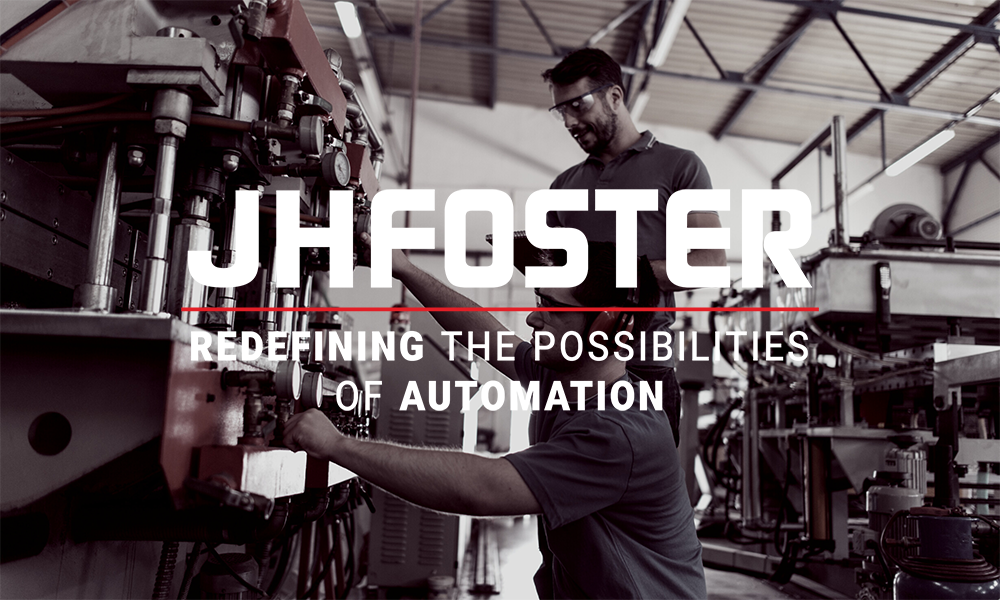Linear Bearings
Take your automation and robotics projects to the next level with durable, reliable linear bearings from JHFOSTER. Our superior selection of bearings comes from the top manufacturers in the industry, ensuring that you get a quality product every time. No matter what kind of project you’re undertaking, our experienced technicians can help you choose the right bearing to do the job efficiently.
Our selection of linear bearings provides an excellent fit for any application and can be installed and maintained by our experienced team to keep your projects running smoothly. With our comprehensive suite, you can find exactly what you need to get everything up and running in no time.
What are Linear Bearings?
Linear bearings are vital components in mechanical and industrial engineering, designed to facilitate smooth and precise linear motion. These bearings enable objects to move in a straight line, translating rotational motion into linear motion or guiding objects along a predetermined path. They play a pivotal role in various applications, from manufacturing machinery to 3D printers and robotics.
How Do Linear Bearings Work?
Linear bearings are composed of an outer shell, typically made of metal or polymer, and a rolling element, which can be a ball, roller, or bushing. The rolling element minimizes friction, resulting in minimal wear and efficient motion.
Types of Linear Bearings
There are different types of linear bearings, each designed for specific applications and requirements:
Ball Bearings
Ball bearings use spherical rolling elements (balls) that offer high precision and low friction. They are well-suited for high-speed and precise movement applications, such as CNC rails and linear guides.
Roller Bearings
Roller bearings feature cylindrical or tapered rolling elements (rollers) that enhance load-carrying capacity and stability. They are commonly used in heavy-duty applications like conveyor systems and material handling equipment.
Bushings
Bushings or plain or sleeve bearings utilize sliding instead of rolling elements. They are ideal for applications where simplicity, cost-effectiveness, and self-lubrication are essential considerations.
Rail Linear Guides
Linear guides, also called linear rails, combine linear bearings with a guide rail to deliver precise and rigid linear motion. They are widely used in industrial and automation systems.
Linear Bearing Selection and Operation
Selecting the right linear bearings for your application is of utmost importance to guarantee optimal performance and prolonged longevity. Let’s look at some key considerations to help you make an informed decision:
Load Capacity
The first step is determining the maximum load your linear bearings will need to support. Choosing bearings that can handle the expected loads without deformation or excessive wear is crucial. By doing so, you can ensure smooth and reliable operation.
Precision and Tolerance
In applications where accuracy is paramount, precision becomes absolutely critical. Consider the required tolerance levels and carefully select bearings that align with your specific precision requirements. This will help you achieve the desired level of accuracy in your application.
Environmental Conditions
Take into consideration the operating environment of your linear bearings. Factors such as temperature, humidity, and contaminant exposure can significantly impact their performance. Therefore, choosing bearings with appropriate seals and materials that can withstand these conditions ensures durability and reliability.
Lubrication
Proper lubrication is vital for reducing friction and preventing premature wear of your linear bearings. Evaluate whether your application requires maintenance-free bearings or if lubrication is necessary. This will help you maintain optimal performance and extend the lifespan of your bearings.
Mounting and Integration
Lastly, ensure that the linear bearings you choose can be easily integrated into your system and are compatible with the mounting configuration. Smooth integration will allow for efficient installation and minimize potential operation issues.
If you need assistance purchasing linear bearings from our shop, don’t hesitate to contact us.
Benefits of Linear Bearings
Linear bearings offer a multitude of benefits that make them indispensable in various industries:
Precise Motion
One of the key advantages of linear bearings is their ability to deliver exceptionally accurate linear motion. This precision is especially crucial in applications that require fine-tuned movements, such as medical devices and semiconductor manufacturing. By incorporating linear bearings into these processes, manufacturers can ensure the highest levels of precision and quality.
Reduced Friction
Linear bearings are designed to minimize friction between moving parts. Less friction helps equipment operate more smoothly, reducing energy consumption and increasing efficiency. This leads to cost savings while prolonging the lifespan of the machinery.
Quiet Operation
In addition to their precision and efficiency, linear bearings offer the advantage of quiet operation. The smooth motion these bearings achieve produces minimal noise, making them particularly suitable for applications where noise reduction is crucial. This feature is highly valued in environments that demand a peaceful, quiet atmosphere, such as medical facilities or laboratory settings.
Longevity
Linear bearings are built to be highly durable when properly maintained. This means they can withstand continuous use for prolonged periods without experiencing significant wear and tear. As a result, the need for frequent replacements is significantly reduced, minimizing downtime and improving productivity.
The longevity of linear bearings saves costs associated with replacements and ensures consistent operation and reliability.
Versatility
From conveyor systems to 3D printing and aerospace, linear bearings find application in various industries. Their versatility allows them to be seamlessly integrated into different systems, providing reliable and efficient motion control solutions.
Frequently Asked Questions
Linear bearings typically have a much longer life than ball bearings. The lubrication used when installing them helps reduce the wear and tear on the bearing, allowing for a longer lifespan.
Linear bearings provide smooth, precise motion along a single axis. They are ideal for use in robotics and automation projects, as they enable machines to move with greater accuracy and speed than other types of bearings. In addition, linear bearings can be used in many industries where precision is necessary such as medical, aerospace, and industrial manufacturing.
Linear rails are superior to traditional ball bearings due to decreased vibration and increased accuracy. With greater accuracy than ball bearings, they provide smooth movement that can help increase productivity and reduce costs.
Request More Information
